Pakistan
Falling dollar, rising inflation
Wisdom on the streets says that when the dollar soars high, inflation rises too, while a fall in the value of the greenback leads to a reduction in prices of necessities.
Perhaps for the very first time, the dollar has fallen by almost Rs. 15 against the Pakistani rupee, however, commodity prices have remained constant. Per unit cost of petroleum products, electricity and gas have not reduced either.
So why did the people not get any relief? A question being asked by everyone yet answered by none.
The truth is that the economy is suffering from a triple lack of planning, teamwork and expertise. Day by day, troubles faced by the country increase with alarming speed. All hopes by common folks to be able to earn and for inflation to fall have been dashed.
The government itself appears baffled and confused. The Finance Minister says GDP will grow by 4% this year. The International Monetary Fund (IMF) and World Bank have put the figure at 1.5% and 1.3% respectively. Our population will continue to expand by 2.5% per annum. Thus, one way or the other, our GDP will go into negative growth. Experts say Pakistan needs to grow by at least 6% this year, otherwise, more than 3 million people will become unemployed.
The theory about dollar rates affecting inflation appears weak here. The government’s plans and its willingness to execute them is all that matters. Till now neither has the federal government shown us its vision, nor the direction it wishes to take the economy on. As for homework, well, the less said the better.
This sordid tale started with our own local Aristotle, Asad Umar, whose appointment was trumpeted as the gateway to Pakistan’s prosperity. Then we were informed that the IMF-sanctioned Hafeez Sheikh and Raza Baqir (Governor State Bank of Pakistan), have magic wands which will restore us to glory. Now, this responsibility lies with Hammad Azhar while Shaukat Tareen is also on the way to take up some charge or the other. How seriously the PTI-led government planned for the economy is evident from the current game of musical chairs.
Pakistan’s economy was heavily reliant on cotton and textile. Cotton is a boon, a crop that takes minimal water to grow while bringing in precious foreign exchange. Thanks to the untiring negligence of our rulers, we have had the lowest production of cotton in 30 years. Out of 212 total government organizations, 197 are running in loss. The steel mill is Rs. 480 billion in debt while for PIA this figure is close to Rs. 430 billion. The government’s bright idea about generating money is through increasing the price of basic utilities. It is now a real possibility that subsidy worth Rs. 140 billion will be abolished, transferring this amount over to the heavy ones the government is already shouldering.
Meanwhile, imports of sugar, wheat and cotton have increased too. The agriculture sector, once our economy’s mainstay, is now in tatters. In 2018, a bag of DAP fertilizer was retailing for Rs. 2200. By 2020 its price tag had soared to Rs. 3467 and today, it stands at a truly mind-numbing Rs. 5137. With such a rapid rise, how will the prices of food commodities not rise?
The desperate ruling coalition is focused only on procuring more and more loans.
We can now term the dollar-inflation theory an old wives’ tale. Unless the price of utilities and commodities goes down, nothing else will. For the immediate future, inflation remains our fate.
Sports
Suit: Bad Bunny's agency hit with 'death penalty'
Rimas Sports, the agency founded by recording artist Bad Bunny, is accusing Major League Baseball's Players Association of "placing a death penalty" on the agency, according to a federal lawsuit the company filed Thursday.

On April 10, the MLBPA decertified Rimas agent William Arroyo and prevented Rimas executives Noah Assad and Jonathan Miranda from seeking certification after accusing the agency of providing improper benefits to players. Additionally, Rimas' other MLBPA-certified agent, Michael Velasquez, was threatened with decertification and quit the company, according to the lawsuit.
In a 27-page complaint filed in U.S. District Court in Puerto Rico, Rimas sought a temporary restraining order and injunction against the penalties levied by the union, which the company argued were "designed to put Rimas Sports permanently out of business." The suit alleged that the MLBPA had "exceeded the scope of its statutory authority under the National Labor Relations Act" by extending sanctions on individuals to what amounts to the whole of the company. Rimas employees were previously denied a temporary restraining order to continue doing business, and, the complaint said, relief is warranted from overreach by the MLBPA that extends to the entire company.
"By blanketly prohibiting any MLBPA certified agents from affiliating with Rimas Sports and Rimas Entertainment in any capacity," the complaint said, "the MLBPA has effectively placed a death-penalty sanction on Rimas Sports as an agency and prohibited Rimas Entertainment, which is not in the sports agency business and has never had a MLBPA Certified Agent, from contracting with clients who may wish to secure branding, sponsorship or endorsement deals. These restrictions extend well beyond the scope of the MLBPA's authority to regulate its agents."
The MLBPA declined comment through a spokesperson.
Rimas previously sought relief from the sanctions on Arroyo, Assad and Miranda through an arbitrator, who denied the effort. The American Arbitration Association will determine the appeal of their individual penalties, which were filed before a May 10 deadline.
The effect on Rimas as a whole, the complaint argued, goes far deeper. Rimas argued that the sanctions have caused the company "irreparable harm," citing the union's prevention of certified agents from working with Rimas; a note sent from MLB to teams warning them not to deal with Rimas employees; and the unwillingness of third parties to engage with the company.
As examples, Rimas cited an inability to continue negotiating a contract extension for New York Mets catcher Francisco Álvarez as well as losing the opportunity to sign reigning National League MVP Ronald Acuña Jr. as a client due to the penalties. Topps, the baseball card brand owned by Fanatics -- in which the MLBPA has invested -- "notified Rimas Sports that because of the MLBPA's prohibitions that they cannot speak with Rimas Sports marketing, endorsement, and sponsorship deals, such as one for Ronald Acuña," according to the complaint.
Rimas Sports, which was started in 2021 by Assad, Miranda and Benito Martínez Ocasio -- the international recording superstar known as Bad Bunny -- aimed to cater to players from Latin America and quickly built a list of clients that included Álvarez, Mets prospect Ronny Mauricio and Colorado shortstop Ezequiel Tovar, for whom the agency negotiated a seven-year, $63.5 million contract extension. Other agents accused Rimas of paying players to join the agency, which would run afoul of MLBPA regulations. While Assad and Miranda sought MLBPA certification, Martínez, according to the complaint, remains "a semi-passive investor."
While the lawsuit does not address the substance of the MLBPA's disciplinary action against Rimas employees, it suggests that the union and others believed "these Puerto Rican 'outsiders' were disrupting baseball sports agency order too much, too fast. This was something that the MLBPA and Rimas Sports' competitors would not allow."
About a year before the completion of the MLBPA's investigation and its decision, entertainment attorneys Oswaldo Rossi, John Baldivia and Jimmy Barnes sought union certification, according to the complaint. In a letter from an MLBPA lawyer, the complaint said, they were told their "certifications will be conditioned on your agreement not to work for or with Rimas Sports, represent Rimas Sports clients" -- an "unprecedented condition imposed on them [that] is not part of the MLBPA Regulations."
"The MLBPA knew, or should have known, that such actions have caused and will continue to cause severe and agency-killing harm to the Rimas Companies," the complaint continued. "In fact, the intended effect of the MLBPA's actions was precisely to eliminate the Rimas Companies from participating altogether in the sports agency market for MLB and MiLB players."
Pakistan
Deputy PM, Kashmir Affairs Minister to leave for Bishkek tomorrow
Federal Minister for Kashmir Affairs Amir Muqam will also travel to Kyrgyzstan along with Deputy Prime Minister and Foreign Minister

Islamabad: Prime Minister Muhammad Shehbaz Sharif on Saturday decided to send Deputy Prime Minister and Foreign Minister Ishaq Dar to Bishkek, Kyrgyzstan.
Federal Minister for Kashmir Affairs Amir Muqam will also travel to Kyrgyzstan along with Deputy Prime Minister and Foreign Minister.
Both the ministers will depart for Bishkek tomorrow morning via a special aircraft.
The Deputy Prime Minister and Foreign Minister will hold meetings with senior government officials in Bishkek and ensure provision of medical facilities to the injured students.
They will also review matters related to the repatriation of Pakistani students.
The Prime Minister has been monitoring the situation throughout the day today and remained in contact with the Pakistani Ambassador in Bishkek.
Despite the situation being under control, it has been decided to send this delegation to Bishkek to ensure necessary cooperation and facilitation for Pakistani students.
Regional
Blood, flames, and horror movies: The evocative imagery of King Charles’s portrait
The furor over the painting points to the Crown’s deeper problems.
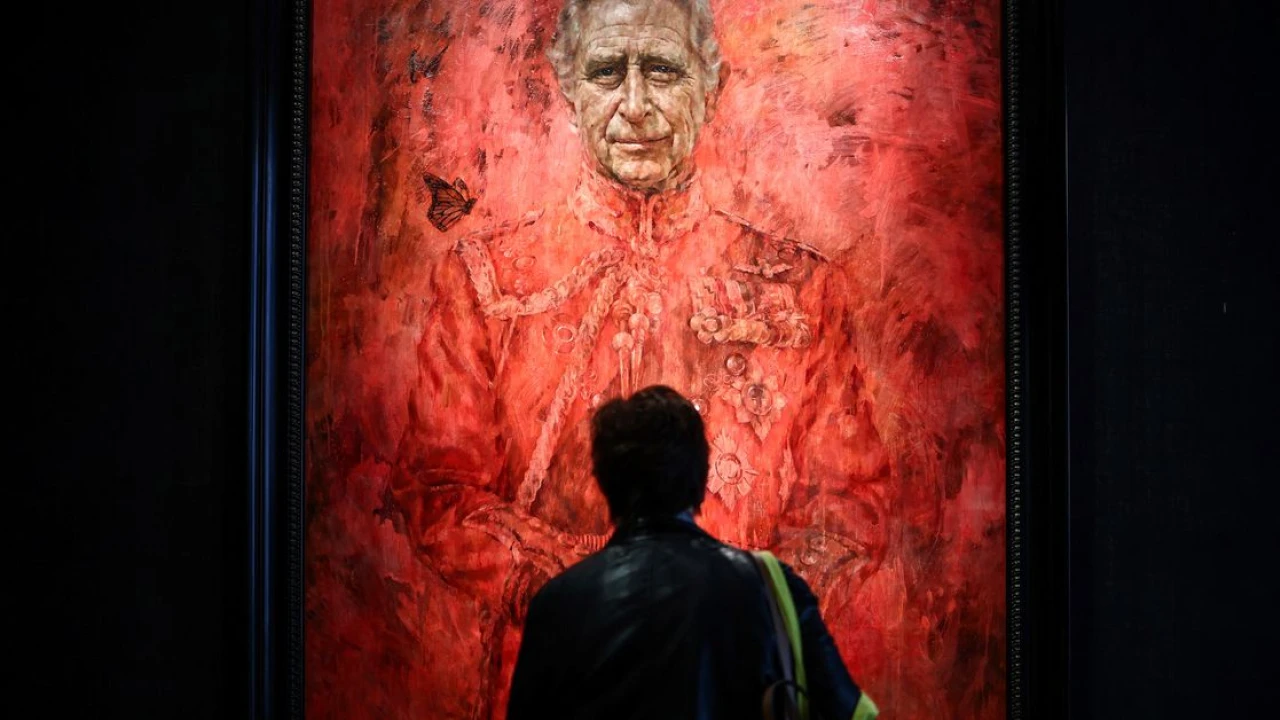
As far back as the 1500s, the British Royal Family has used formal portraits to project a positive and authoritative image. Their most recent entry, however, is giving audiences a very different impression, the latest in a series of public relations blunders at a tenuous time for the monarchy.
The new portrait of King Charles, by British artist Jonathan Yeo, features the monarch looking on serenely while wearing a red Welsh Guards uniform against a red backdrop. Aside from his hands and face, the portrait is covered in red paint strokes, a visual that for some onlookers, recalled flames, blood, and horror films.
“It looks like he’s bathing in blood,” a commenter quipped on an Instagram post announcing the portrait. “To me it gives the message the monarchy is going up in flames or the king is burning in hell,” another commenter wrote.
King Charles unveils his first official portrait since coronation. pic.twitter.com/YVGtlnDhx7
— Pop Base (@PopBase) May 17, 2024In his description of the painting, Yeo says a chief aim was to capture Charles’s evolution as a leader and ascension to the throne. The painting also includes a butterfly hovering above Charles’s right shoulder, an addition the king reportedly suggested himself to illustrate his transformation and commitment to environmental causes.
For some, the bold palette of the painting conjured more brutal aspects of the monarchy’s history, however. Certain observers have interpreted the work as a reminder of the Crown’s bloody advancement of colonialism. “It almost alludes to some sort of massacre that he’s been part of,” Tabish Khan, a London art critic, told Business Insider. “Given the royal family’s history and ties to colonialism and imperialism, it’s not hard for people to look at it and then make the leap that it’s somehow related to that.”
Others have dabbled in memes referencing The Picture of Dorian Gray, the painting of a villain from Ghostbusters 2, and the anecdote Charles once told about wanting to be Camilla’s tampon.
And while much of the response has been poking fun at the portrait, the controversy also points to deeper issues the monarchy faces, as it navigates an uncertain transition after Queen Elizabeth II’s death and grapples with its own past.
The painting aimed to capture Charles’s transformation
Yeo, an established artist who has also painted former UK Prime Minister Tony Blair as well as Charles’s father Prince Philip and his wife Queen Camilla, sat with Charles four times for his first portrait as King.
Prince Philip, Duke of Edinburgh 1921-2021
He was a hugely impressive man in person, who’s public persona belied a fierce intelligence, quick humour and seemingly endless curiosity. Very happy memories of sittings at Buckingham Palace back in 2006#rip #princephilip pic.twitter.com/mCYS6odFRv
“Royal portraits in the past have had an important role to play in signifying power and projecting an image,” the BBC’s Katie Razzall writes. “They were part of the tools used to ensure the survival of the monarch.”
One of Yeo’s aims with the painting, which he began in 2021, was to underscore Charles’s essence as a person, how he’s changed as he’s taken on the role of king and the struggles he’s endured. “My interest is really in figuring out who someone is and trying to get that on a canvas,” Yeo told the BBC.
Yeo’s website describes the color scheme as injecting a “dynamic, contemporary jolt” to the work, differentiating it from past portraits. The red is also inspired by the bright red color of the Welsh Guards uniform and is intended to give a nod to Charles’s military service; he became a colonel in the Welsh Guards in 1975. It’s also a color Yeo has used in the past, with paintings of actor Giancarlo Esposito and World War II veteran Geoffrey Pattinson featuring similar color schemes.
Many of Yeo’s past works are composed much like Charles’s, with one dominant color serving as the background and the subject’s face seemingly floating in the foreground.
According to Yeo, both the king and queen had previously seen parts of the painting and appeared to respond positively at the time. “Yes, you’ve got him,” Camilla reportedly said about his capturing Charles’s personality. The artist notes that Charles was surprised by the color, but broadly seemed to like the unfinished work he saw. In a video clip of the official unveiling, Charles himself appears initially startled by the painting.
The portrait’s reception recalls the monarchy’s problems
Much like US presidential portraits, the paintings of UK monarchs are intended to send a message about their leadership and character.
In one of former President Barack Obama’s portraits, artist Kehinde Wiley featured him surrounded by green foliage, a move that honored his upbringing in different places, and that marked a break from past presidential portraits.
The red in King Charles’s portrait had much less flattering connotations for some observers, though, as they see allusions to the country’s colonialism. For centuries, the British Empire violently seized power in numerous countries — including India, Kenya, and New Zealand — and the monarchy was a key symbol of its authority in those places.
Even today, the king is still considered a figurehead, and the “head of state” in 15 independent countries that are part of the British Commonwealth. Many — including Jamaica — are actively working to remove Charles as their official “head of state,” a role that’s purely symbolic but nonetheless represents Britain’s history of oppression.
In this capacity, and others, the modern monarchy remains a key symbol of the UK’s governance, even though royals don’t have practical policymaking power like Parliament and the prime minister.
As such, many experts and people from former colonies have been eager to see the monarchy do more to reckon with its imperial history, and to more explicitly acknowledge it.
“Imagine a very different kind of monarchy, where in the name of decency rather than politics, a monarch could say things like, ‘We acknowledge and regret the role of Britain, the British government and the British monarchy in slavery and colonialism.’ That kind of moral leadership could have such a different impact in the world,” Priya Satia, a history professor at Stanford, previously told Time.
The portrait is, in a sense, the least of the monarchy’s recent problems as it navigates a difficult transition following Queen Elizabeth II’s 70-year reign. There was the awkward rupture with Charles’s youngest son Prince Harry and his wife, American actress Meghan Markle. Charles publicly disclosed a cancer diagnosis in February. His daughter-in-law, Princess Catherine of Wales, revealed her own cancer diagnosis in March, following months of rampant speculation about her well-being.
What was once a canvas for projecting royal authority has instead become another reckoning with what the monarchy stands for and the brutal history it’s failed to fully confront.
-

 Pakistan 23 hours ago
Pakistan 23 hours agoShehbaz nominated acting president of PML-N
-
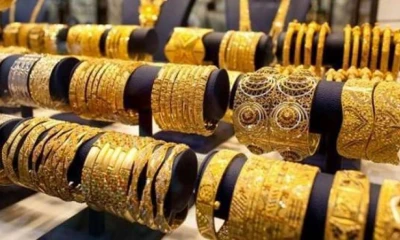
 Business 2 days ago
Business 2 days agoRs1,600 increase recorded in per tola gold price
-

 Pakistan 2 days ago
Pakistan 2 days agoTariq Cheema apologises to Zartaj Gul after NA misconduct
-
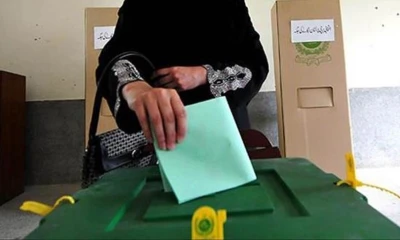
 Pakistan 11 hours ago
Pakistan 11 hours agoPolling for NA-148 Multan-1 by-election today
-

 Regional 2 days ago
Regional 2 days agoSun shines in Lahore, no chance of rain
-
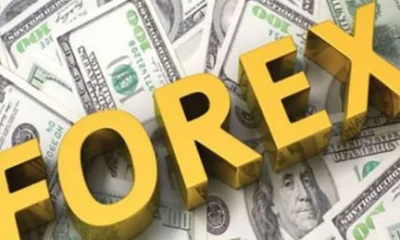
 Business 2 days ago
Business 2 days agoPakistan's forex reserves surge $15mn
-

 Pakistan 14 hours ago
Pakistan 14 hours agoPresident summons Senate session on May 21
-
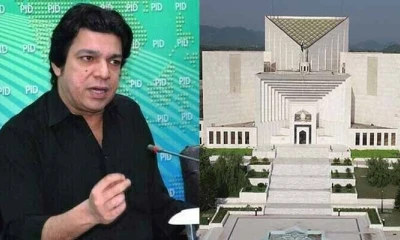
 Pakistan 2 days ago
Pakistan 2 days agoSuo Motu case: CJP seeks response from Vawda, Mustafa













